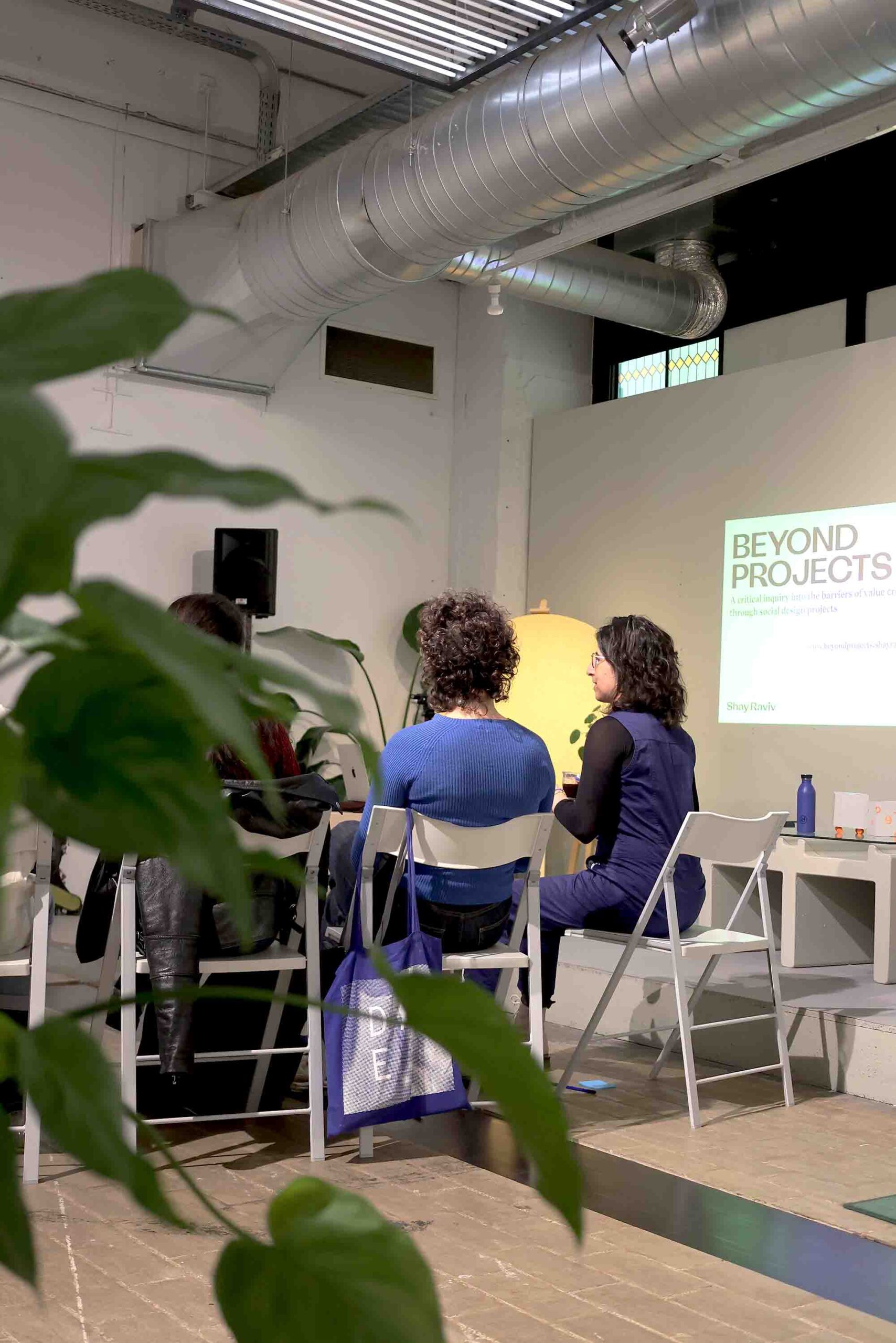collaborations
for future
Workshop Methodology
Research and text by Shay Raviv
by Shay Raviv
Feet rooted in the ground, head floating in the sky
Why do many social design projects remain short-term interventions? How can we go beyond the symbolic enactment of promising ideas? What is needed to overcome some barriers to the long-term continuation of design for society?
Beyond Projects is an in-depth research on social design projects, with outcomes bundled into a visual essay. Shay Raviv, together with a research team and several partners, explored which barriers in social design often limit social design projects’ continuity and further development. At its core, the essay proposes five workable approaches to increase the sustainability of Social Design projects and the likelihood of implementation. By being aware of the path for continuity and ideally aiming at it from the beginning of the social design trajectory, some barriers toward implementation may be lowered (visit the website for the full essay).
In a finite world, what can we consistently commit to?
In this chapter, Shay Raviv introduces the workshop based on the Beyond Projects framework and describes some exercises she proposed to the group. She shared the outcomes and reflects on what happened when Beyond Projects was introduced to the Collaborations for Future participants. Raviv shares her insights from the workshop by considering two realms: the visible/material and the invisible/immaterial. This is also the main conclusion she draws from the session. These realms are equally essential departure points for developing paths for continuity, whether it is a seed of a project, an intention, a further developed experiment, or a standing initiative. In a finite world, what can we consistently commit to?
The material realm means exploring continuity from the various project’s physical aspects, such as potential resource systems, transportation, and maintenance. The immaterial realm means exploring continuity from the initiative’s invisible parts, like continuity strategies, relationships with institutions, desired effects, etc. When working with design processes, especially cross-disciplinary and open-ended ones, it is very challenging to work towards continuity. This chapter shows how explicitly jumping between the two realms can help keep design collaborations to evolve. Paving a continuity path which is grounded and responsible while also stretching the shared understanding of what the design initiative can become.
Raviv expanded the Beyond Projects approach for this CFF community meeting by translating it into a collaborative workshop. The session combined pragmatic thinking with imaginative, abstract notions. Different exercises supported the teams of designers and scientists in reflecting on what is or could be their Beyond Projects journey.
The afternoon started with a quick association discussion: ‘What is Beyond Projects for you in one word’?:
For some, Beyond Projects is about the beginning of something or its next cycle: birth, afterlife, and afterbirth.
For others, it is about helping something last: maintenance.
Some people relate it to passing something forward: handing over.
For many, it is about the effect, the transmission of energy that takes its own path: snowball, ripple effect in the sea, throwing something into the air and hoping it lands.
It is often remarkable how first associations summarise so well what could then evolve into hours of discussions.
The workshop exercises included context mapping, plotting envisioned outputs by contexts, applying Beyond Projects’ framework to each collaboration, bodily mapping and imagining the continuity state of the project as a creature. In between, Raviv shared the research to provide background and support the teams.
Some exercises mentioned above were rather structured and practical, others imaginative and conceptual. The workshop methodology invited the teams to position their research further by focusing on the context in which they act. In parallel, the workshop encouraged imaginative, abstract thinking to enable new conversations about continuity and impact to emerge. It was an invitation to root the feet in the ground while the head floated in the sky. This approach seemed to be a fruitful way of working together that relates well to the encounter of science and design, even more so when working on the urgency of climate change. We need imagination, but we also need practical actions. We should not choose between the two but create a space for both attitudes.
Matilde: What I found most interesting was the whole idea of using the project to involve the community, how the work can impact it (or not), and what happens physically to the work afterwards. As I’m working site-specific, the question of the actual impact and involvement the work can have is very central. Also, what happens to it? Can I repurpose it? Should I leave it behind? Is it my decision to make? Can it be helpful to the community in Texel somehow?
